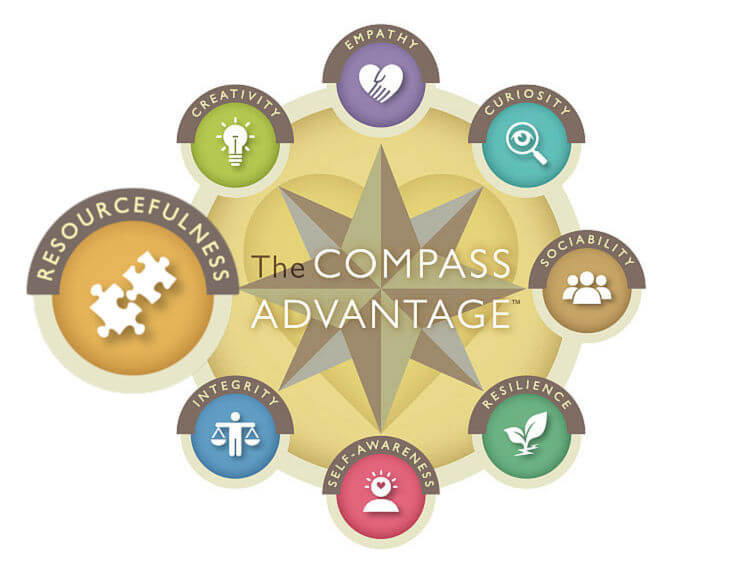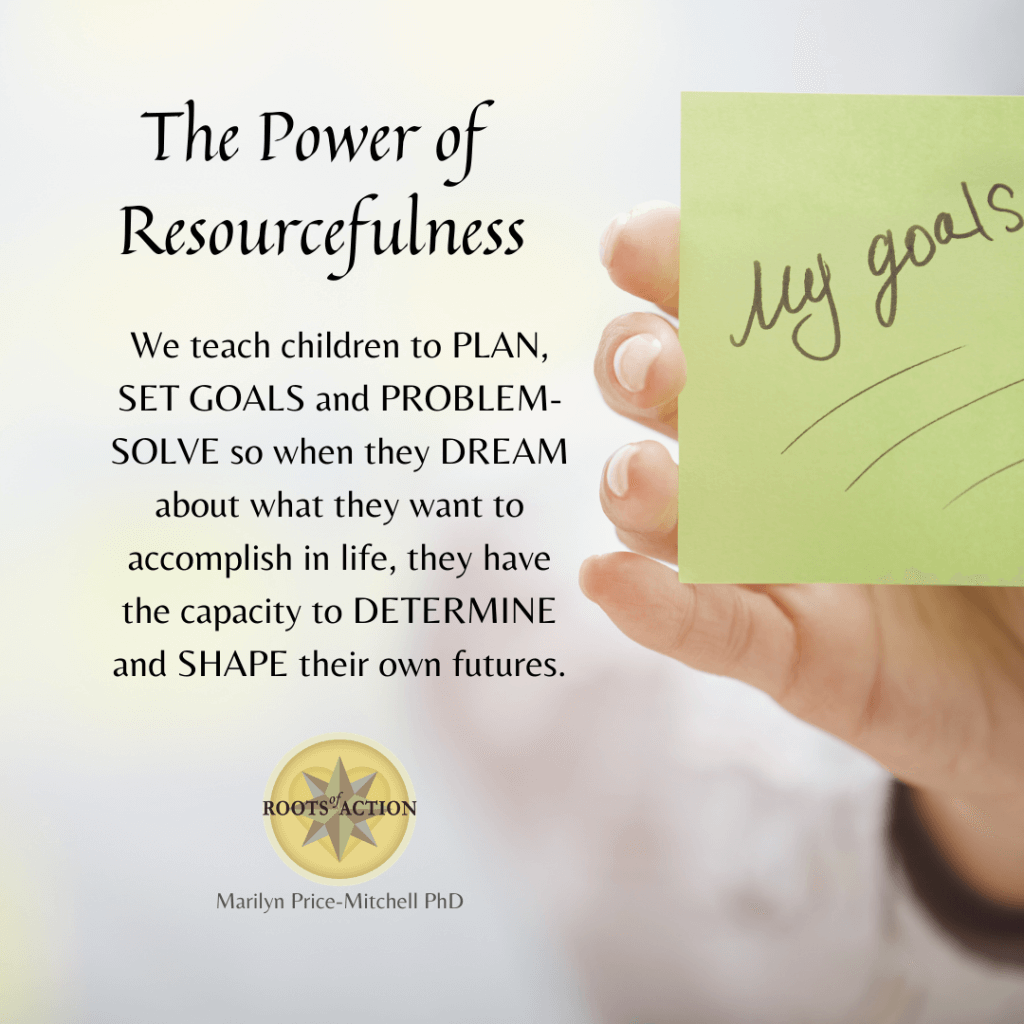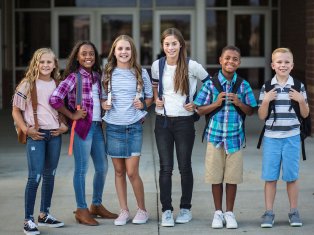
Understanding how students achieve goals is critical knowledge for today’s teachers. This involves more than simply imparting information about goal setting. It’s about fostering skills in planning, organizing, decision-making, and problem-solving. These skills are foundational for developing resourcefulness in students, the ability to use available resources to achieve goals and intended results. By learning to envision multiple outcomes, set goals, experiment, and overcome challenges, students forge vital links between knowledge and successful goal attainment, becoming proactive architects of their futures.
How to Define Resourcefulness
Students in today’s classrooms must understand the concept of resourcefulness and why this learnable attribute is key to how they achieve goals, not only in school but also in future careers.
Resourcefulness goes beyond having access to resources. It’s about how students creatively and efficiently utilize what they have at their disposal. Learning to achieve goals is not a linear process. Rather, it is a collection of skills and internal strengths that enable individuals to accomplish desired outcomes through their own resourcefulness.
7 Key Aspects of Resourcefulness
1. Problem-Solving
Resourcefulness is closely tied to the ability to solve problems, especially in situations where direct or conventional solutions are not apparent. This involves thinking outside the box and finding innovative ways to overcome obstacles as one works to achieve goals.
2. Creativity and Innovation
Being resourceful often requires creative thinking. It involves looking at things in new ways, finding unique solutions, and applying knowledge and tools in unconventional manners.
3. Adaptability
Resourceful people are able to adapt to changing conditions and make do with what they have. They can adjust their strategies or approaches based on the resources available and the demands of the situation.
4. Persistence and Resilience
Resourcefulness also involves persistence in the face of challenges and setbacks. It’s about not giving up easily and having the resilience to continue trying different approaches until a solution is found or students achieve goals.
5. Self-Reliance
This aspect of resourcefulness is about having confidence in one’s own abilities to figure things out and solve problems independently.
6. Optimism and Positive Attitude
A positive outlook can be a crucial part of being resourceful. It’s about seeing possibilities where others might see obstacles and maintaining a positive attitude.
7. Networking and Collaboration
Sometimes, being resourceful means knowing when and how to ask for help. It entails building a network of contacts and collaborating with others to pool resources and ideas to achieve goals.
Resourcefulness Enables Students to Achieve Goals
Resourcefulness transcends academic performance. It’s not merely about high grades or test scores. In fact, resourcefulness involves both cognitive and emotional information processing. Studies indicate that resourceful students are not only adept at reaching their goals but also exhibit greater resilience under stress.
This attribute is part of The Compass Advantage, a model focused on positive youth development, linking resourcefulness to other essential skills like sociability, resilience, creativity, and self-awareness.
In recent years, we’ve come to recognize the set of brain processes that help children achieve goals as executive functioning skills. Housed in the frontal lobes, they help students plan, start, oversee, and finish tasks big and small. These same skills enable students to chart fulfilling courses through life. When these abilities are weak, everyday living can feel like being on a ship without a rudder.
Numerous resources are available to educators to enhance these skills in students, such as the guide from the Center on the Developing Child at Harvard University and Dr. Christopher Kaufman’s book on executive function in the classroom. Executive Function in the Classroom: Practical Strategies for Improving Performance and Enhancing Skills for All Students.
7 Classroom Strategies that Help Students Learn Resourcefulness and Achieve Goals
Teachers play a pivotal role in fostering resourcefulness by creating environments that encourage goal setting, strategic planning, prioritization, resource-seeking, and progress monitoring. Here are seven strategies educators can employ to nurture this vital skill:
1. Teach the Art of Resourcefulness
Use stories of individuals like Temple Grandin, Richard Branson, and Walt Disney to illustrate resourcefulness. Encourage students to analyze these narratives to understand the attributes of people who achieve goals and demonstrate resourcefulness.
2. Apply Problem-Solving Knowledge to Achieve Goals
Incorporate George Polya’s principles of problem-solving by teaching four simple steps:
- Understand the problem.
- Devise a plan.
- Carry out the plan.
- Reflect and review.
As students become familiar with the four principles, add a fifth step that encourages them to extend the problem to new situations. This helps students generalize and apply their knowledge.
3. Leverage Technology
Utilize technological tools like mind mapping software, electronic planners, and note-taking programs to enhance students’ resourcefulness and ability to achieve goals.
4. Encourage Reflection
Teach students to reflect on their problem-solving process, considering what they would do differently in future scenarios.
5. Promote Independence and Collaboration to Achieve Goals
Balance teaching independence with collaboration, helping students determine which tasks are best tackled individually or as a team.
6. Teach Positive Skepticism
Encourage students the art of positive skepticism and to adopt a skeptical mindset, requiring additional evidence and considering multiple solutions to problems.
7. Flip the Classroom
Implement a flipped classroom model to observe and support students’ planning and organizational skills in real time, providing differentiated instruction and fostering their ability to achieve goals and learn from challenges. See Flip Your Classroom: Reach Every Student in Every Class Every Day by Jonathan Bergmann and Aaron Sams.
By integrating these strategies, teachers can significantly enhance their students’ capacity to achieve goals and use knowledge effectively, fostering a generation of resourceful, resilient, and goal-oriented individuals. Parents can also teach resourcefulness at home.
Student Success Series for Educators
Read the nine articles in the Student Success Series:
Student Success Develops from Inside Out – (Series Introduction)
Curiosity is a Core Predictor of Academic Performance
Social Emotional Development in the Classroom
Building Resilience in Your K-12 Classroom
Metacognitive Strategies for Student Success
Academic Integrity is Essential to Learning
Teach Students to Achieve Goals
Creative Thinking Sparks Student Engagement & Discovery
Empathy in the Classroom — coming soon.
Follow our Facebook feed to stay informed of new articles.
Free Resources for Teachers
The Compass Youth Survey for Students ages 10-17: An online survey that can help students identify, understand, and strengthen their core abilities and impact their success as a student.
Our Community Promise: a frame-ready document that many teachers have hung in their classrooms to remind them and their students of the kind of values and habits of thinking that nurture student success.
I Have a Dream: a frame-ready document created by teens that define genuine success—to engage your students.
Reframing Success: Helping Children & Teens Grow from the Inside Out: an eBook that introduces The Compass Advantage. This eBook has been widely used by schools as a “Book Club” reading to engage parents about raising healthy children and teens.
Related Articles on Achieving Goals
Published: January 24, 2024





